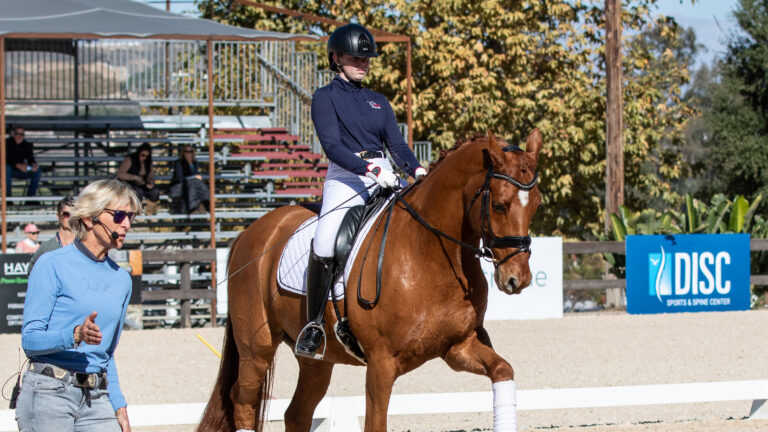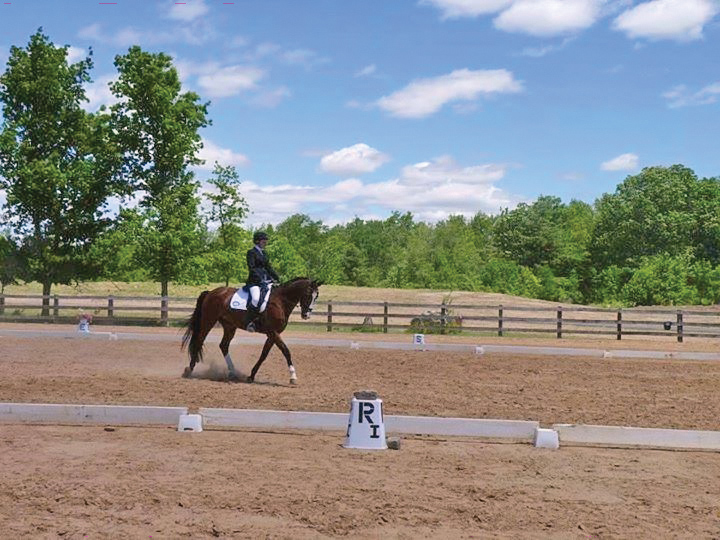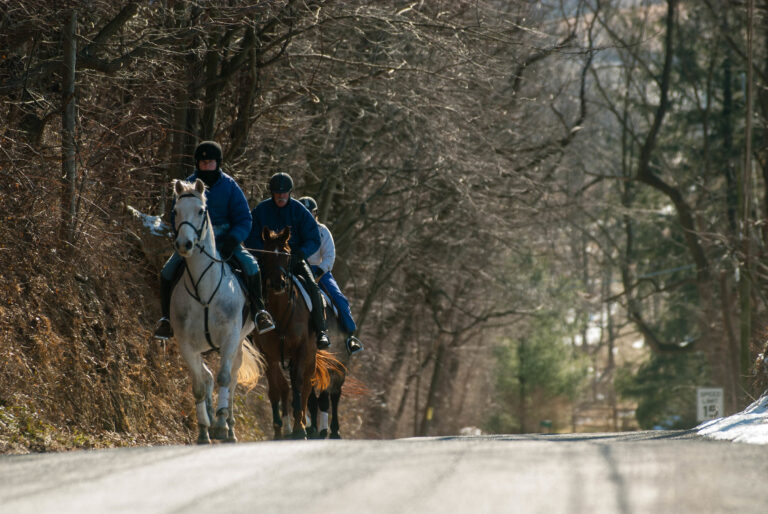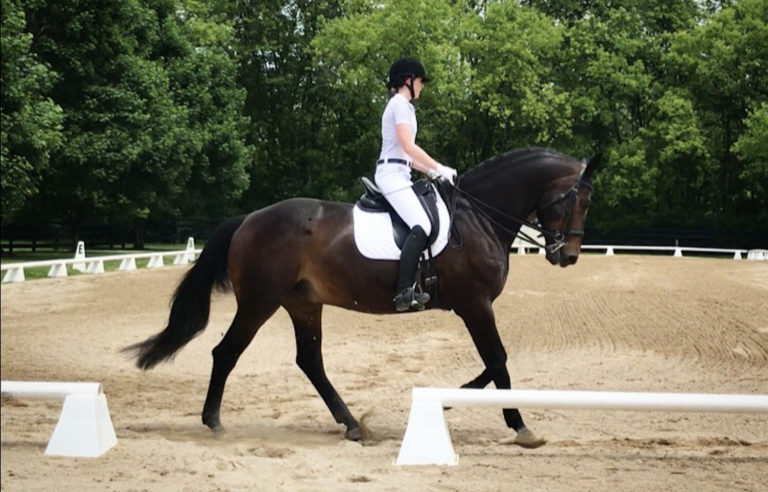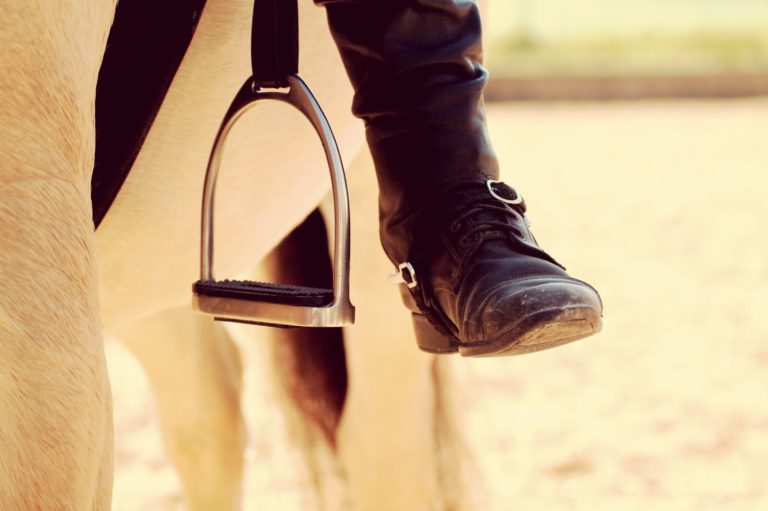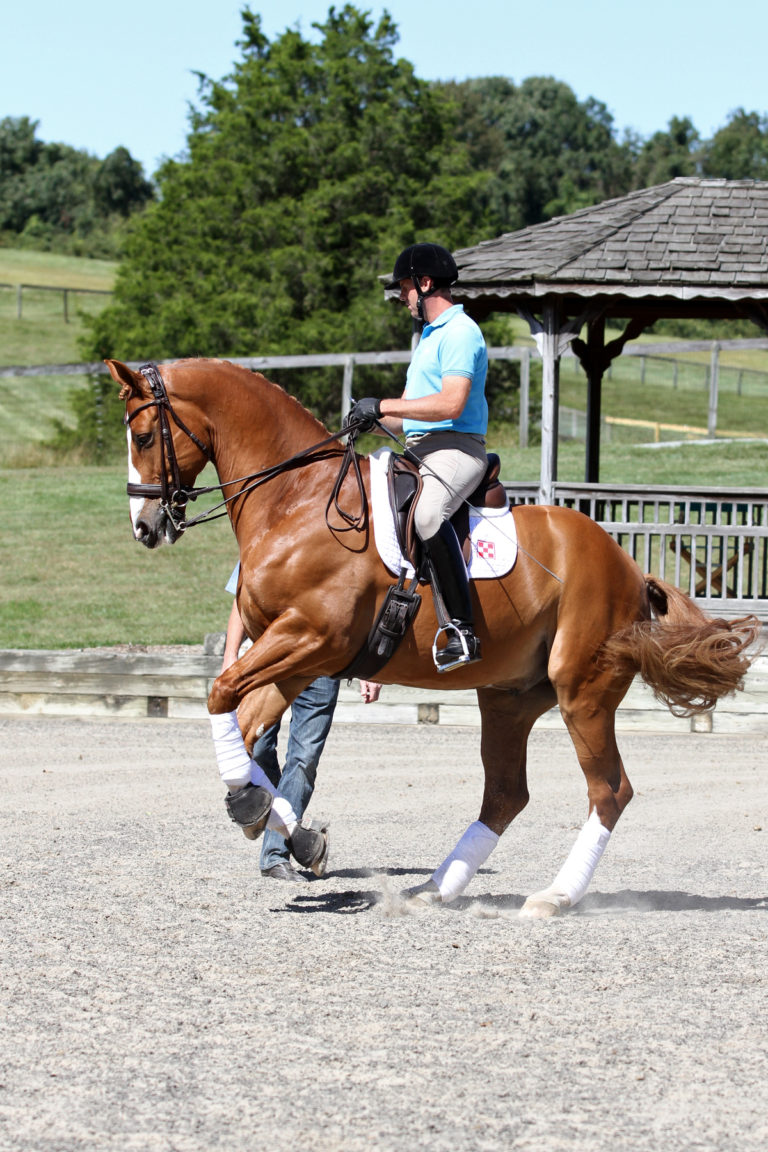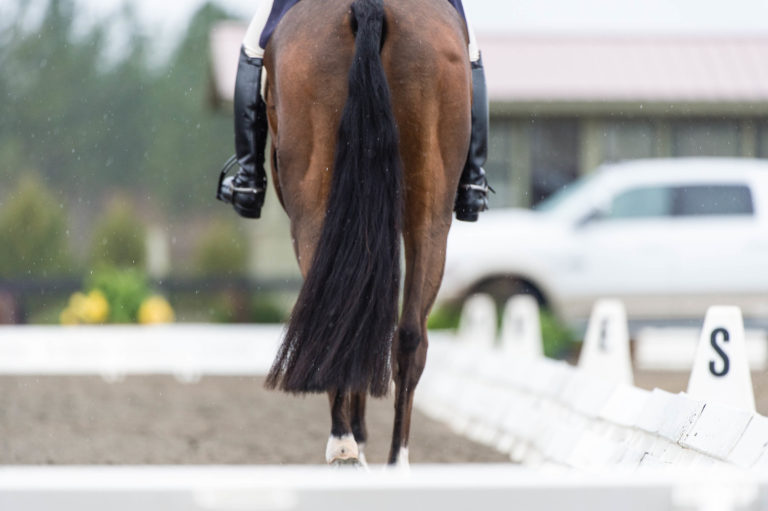
The Spanish walk is a beautiful, crowd-pleasing movement. It demonstrates the versatility and the strength of the baroque type of horse. The upright conformation and powerful hindquarters of baroque horses allow them to reach high and out with each foreleg in the rhythm of the walk.
I am always reminded of this movement when I see a horse outside on a warm summer day playing in one of our nearby ponds or perhaps in a large puddle left behind by a shower. As the horse investigates the rippling water, he tests the depths of it by striking at the surface with his front hoof. As he does this, he realizes that the water is cool and refreshing. He continues to naturally produce the beauty of the Spanish walk as he wades through the water, sending bursts of it through the air.
The first thing to know about teaching the Spanish walk is that, like all movements, it should come from back to front. What I mean is that the power of this movement comes from the back of the horse and then goes to the front, where it is released through the shoulder and foreleg. Sometimes I see people just trying to focus on getting the horse to lift his leg, which results in the hind legs dragging or staying in place. Both are incorrect positions for this movement. Another common mistake is that the horse will begin to passage as the rider tries to harness the energy from the hindquarters. It is important to allow the horse to go forward, but the walking gait must be maintained for this move to be executed correctly.
I train a horse to do the Spanish walk from the ground. I first teach him to lift one front leg by tapping it with a longer training whip right behind the elbow. Remember that eventually you are going to be transferring this request to the aids of the rider so you want the horse to be sensitive to the aids and respond to as light an aid as possible.
I usually start training a horse for the Spanish walk around the age of 5, once he has established a balanced and consistent walk, trot and canter. It is important to wait until your horse is ready both physically and mentally so that you are not stressing either.



Here are the basic steps for teaching the Spanish walk from the ground:
Step 1: Walk your horse along the rail to establish a consistent rhythm, tempo and cadence. It is important that you have a clear line of communication with him as he walks along the rail. You want to stand next to the horse, alongside his shoulder. He should wear a bridle with a good set of reins that are easy to hold. I like to use a piaffe whip so that I have control over precisely where I tap.
Step 2: The first time you ask your horse to lift his foreleg, tap lightly behind his elbow. He should remain in place. You should be able to ask him to raise either of his forelegs from either side of his body. Doing this will ensure that he has a clear understanding of what the cue is to raise his leg.
Step 3: Once the horse can easily be cued to lift each foreleg, begin asking him to walk along the wall and continue to tap him behind his elbow to cue him to raise his leg. Start with the one closest to you and then ask for the opposite leg by tapping behind the opposite elbow. Always start by asking the horse to raise his foreleg and then let him walk forward two or three steps. Next, ask him to lift the other foreleg and then allow him to walk forward two or three steps. Putting the walk steps between each leg lift will ensure that your horse does not start skipping or trying to raise both legs at the same time.
Step 4: After that, we start to increase the Spanish walk steps by asking for a right-leg lift then a left-leg lift and then three or four steps of walk. Then repeat: right leg, left leg, walk. This helps to maintain balance in your horse and increases his stamina and strength at a safe and consistent pace.
Step 5: Once the horse can easily and consistently raise each front leg in the form and cadence of the Spanish walk, you can begin to transfer some of the cues to the bridle by lifting your hand as he raises his leg. If you are asking for his right leg to come up, you will lift your right hand and increase the pressure of the bit on the right side. The same goes for the left side. This will help to make the transfer of the cues from the ground to the rider smoother.
Step 6: Once the horse understands the cues from the ground, he can easily demonstrate this movement on the long lines with a rider up. The rider begins to cue the horse by using leg and hand aids. As I continue to tap the horse on the elbow or shoulder from the ground, the rider applies the aids at the same time, and the horse eventually transfers the ground cue to the rider cue.
To ask the horse to pick up his right front leg the rider uses the left leg and right rein. The leg aid helps to send the horse forward into the movement and encourages him to step underneath himself with his hind end to give the most power and thrust to this front-end maneuver. The right rein is slightly raised and vibrated as a signal that this is the leg you want him to raise. If you ask the horse to raise his left leg, the cue from the rider is right leg and left hand. If a horse becomes frustrated or confused, I will leave the rider on but go back to the basics with the ground cues.
Taking higher steps is something that I work on once the horse has developed a response to the cues from the saddle. I usually carry a longer whip that will reach the horse’s knee. When I give the cue for the Spanish walk with my leg I also use the same light tapping method that I used at the ground stages of training, but instead I tap the knee. Again I emphasize the importance of light tapping to maintain the horse’s sensitivity to the aid.
I always try to visualize a placement bar out in front of my horse much like a barre a ballerina would use when practicing her technique. As I ask the horse to reach forward with his front legs, I imagine him stretching his front legs to reach the bar. At first I set my imaginary bar quite low, but as the horse progresses and becomes stronger, I imagine it higher so he takes higher, more flexible steps.
Visualization is a great tool to use when you are training your horse. It allows a lot of room for him to make mistakes without getting overly anxious. Mirrors are also helpful in this process because as he reaches toward your imaginary bar, you can check the mirror to make sure he is stepping underneath himself correctly. You can watch the progression of his front legs and their amount of lift.
Don’t forget that this movement requires time and patience. The beauty of the Spanish horse is that he performs these maneuvers with grace and elegance like no other. Not all horses progress at the same speed, and this movement not only requires a great deal of strength but also a great deal of coordination. Once you put the proper amount of time into your training, you will have a horse that is willing and able to produce the beautiful and majestic Spanish walk.
Mario A. Contreras has been head horse trainer at Medieval Times in Chicago, Illinois, for 22 years.He is a master of the classical airs above the ground and also teaches and trains doma vaquera and working equitation at his facility, MC Horse Training, in Gilberts, Illinois (mchorsetraining.com).




